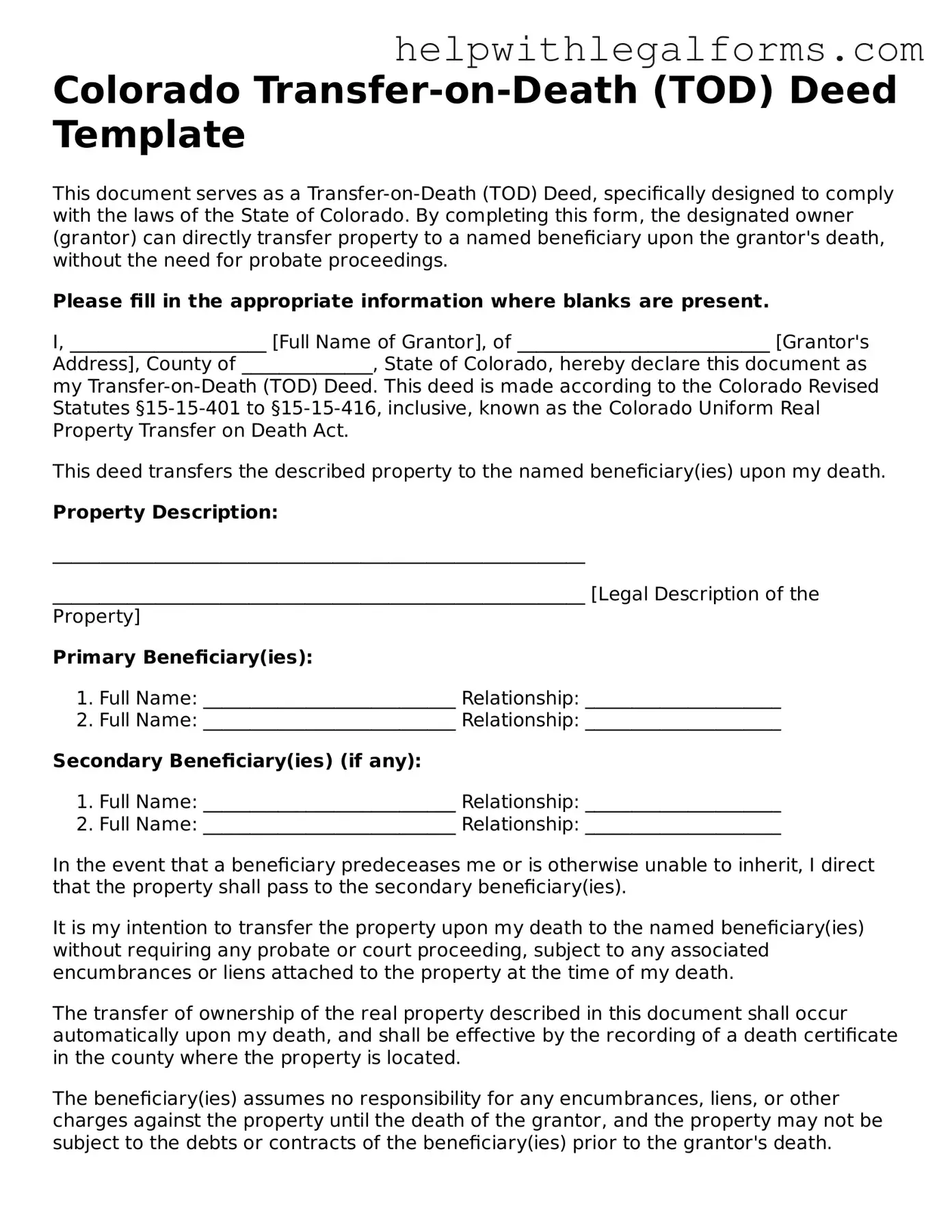Colorado Transfer-on-Death (TOD) Deed Template
This document serves as a Transfer-on-Death (TOD) Deed, specifically designed to comply with the laws of the State of Colorado. By completing this form, the designated owner (grantor) can directly transfer property to a named beneficiary upon the grantor's death, without the need for probate proceedings.
Please fill in the appropriate information where blanks are present.
I, _____________________ [Full Name of Grantor], of ___________________________ [Grantor's Address], County of ______________, State of Colorado, hereby declare this document as my Transfer-on-Death (TOD) Deed. This deed is made according to the Colorado Revised Statutes §15-15-401 to §15-15-416, inclusive, known as the Colorado Uniform Real Property Transfer on Death Act.
This deed transfers the described property to the named beneficiary(ies) upon my death.
Property Description:
_________________________________________________________
_________________________________________________________ [Legal Description of the Property]
Primary Beneficiary(ies):
- Full Name: ___________________________ Relationship: _____________________
- Full Name: ___________________________ Relationship: _____________________
Secondary Beneficiary(ies) (if any):
- Full Name: ___________________________ Relationship: _____________________
- Full Name: ___________________________ Relationship: _____________________
In the event that a beneficiary predeceases me or is otherwise unable to inherit, I direct that the property shall pass to the secondary beneficiary(ies).
It is my intention to transfer the property upon my death to the named beneficiary(ies) without requiring any probate or court proceeding, subject to any associated encumbrances or liens attached to the property at the time of my death.
The transfer of ownership of the real property described in this document shall occur automatically upon my death, and shall be effective by the recording of a death certificate in the county where the property is located.
The beneficiary(ies) assumes no responsibility for any encumbrances, liens, or other charges against the property until the death of the grantor, and the property may not be subject to the debts or contracts of the beneficiary(ies) prior to the grantor's death.
Grantor's Signature: ___________________________
Date: _____________________
State of Colorado
County of _______________
On this day, _______________ [date], before me, a notary public, personally appeared __________________ [Name of Grantor], known to me (or satisfactorily proven) to be the person whose name is subscribed to the within instrument, and acknowledged that he/she executed the same for the purposes therein contained.
In witness whereof, I hereunto set my hand and official seal.
______________________________________
Notary Public
My commission expires: ___________________
